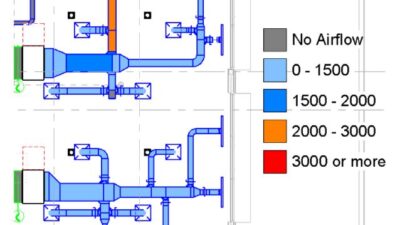How we’re using AR technology, HoloLens and more to build the facilities of tomorrow.

Augmented reality (AR) — superimposing computer-generated images on the user’s view of the real world — is increasingly used in a variety of applications today. From smartphone games and social media filters to furniture design and classroom education, this technology is being utilized across virtually every industry, and building design and construction is no exception.
In fact, exciting developments are happening at the intersection of AR and the work we do at Stellar. While it’s been used as a marketing and selling tool, we’re beginning to apply AR on job sites more frequently. It’s safe to say this powerful technology is revolutionizing the way buildings are designed, constructed and renovated.
Visualizing a site with augmented reality
Before groundbreaking occurs, augmented reality can help owners visualize what their new facility will look like in the context of the site. Simply by holding up a tablet to the empty plot of land, you can see the completed building in relation to its surroundings. What will the facade look like when standing in the parking lot? Will that corner office window have a view of traffic or trees? AR technology is helping owners, designers and construction teams make more informed decisions before the first shovel even hits dirt.
Using augmented reality to confirm job site accuracy
Once construction is underway, augmented reality can help confirm site conditions to ensure a more accurate and efficient construction project. For example, we’re able to walk through an active job site with an HVAC subcontractor and show them exactly where everything should be installed according to the digital model created by our designers.
We’re able to look through a tablet’s camera and overlay images from the digital model on top of the real-world conditions. Plus, those features appear to scale, in real time, and they maintain proper perspective as you move around because the software understands where the tablet is located in space and continually updates accordingly. This helps prevent mistakes and avoids time delays by giving crews a more comprehensive view of the project.
Beyond the tablet: True 3D with HoloLens
Since tablets offer a two-dimensional viewing screen, they aren’t ideal when it comes to truly understanding depth perception. A solution we’ve begun using is Microsoft’s HoloLens, billed as “the first self-contained, holographic computer, enabling you to engage with your digital content and interact with holograms in the world around you.” The device is similar to a virtual reality headset, but rather than blocking out the real world, the transparent glass allows you to see the digital images superimposed on your surroundings. The HoloLens allows our teams to walk around an active job site and see how different layers of the model look in context, including plumbing, electrical wiring, HVAC systems, structural components and more.
Augmented reality technology is evolving rapidly, and it will continue to influence the way modern-day buildings are designed and constructed. We’re always tracking what’s new and next when it comes to design tech tools, and I’m sure we’ll revisit this hot topic on the blog soon.
This article originally appeared on Stellar’s blog, Food for Thought. Stellar is a CFE Media content partner.




